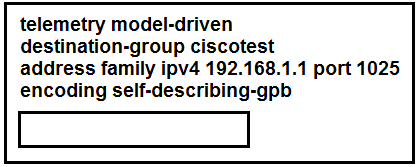Which protocol is used for communication between the PCE and PCC?
C
A network engineer is configuring RIP as the routing protocol between multiple PEs and CEs. The engineer must avoid advertising the same routes back to their sources. Which action should be performed on the routers to accomplish this task?
B
A network engineer is deploying VPLS configuration between multiple PE routers so that customer's remote offices have end-to-end LAN connectivity. Which additional configuration should the engineer perform on the PE routers to enable the virtual switch instance?
D
The network-engineering team of a service provider is integrating several recently acquired networks into a more scalable common Unified MPLS architecture.
The new network architecture will support end-to-end VPNv4 and VPNv6 services with these requirements:
✑ The IGP of the core layer is IS-IS in Area 0.
✑ The IGP of the aggregation layers is OSPF in Area 0.
✑ The LDP protocol is used to distribute label bindings within each IGP domain.
Which task must the network engineer perform when implementing this new architecture?
B
How is a telemetry session established for data analytics?
A

Refer to the exhibit. A Cisco engineer is implementing gRPC dial-out on an ASR. Receiver 192.168.1.1 will be assigned one of the subscriptions, and it will manage the ASR. Which command is needed to complete the router configuration?
A

Refer to the exhibit. Export statistics received do not include the BGP next hop.
Which statement about the NetFlow export statistics is true?
B
Reference:
https://www.cisco.com/c/en/us/td/docs/ios-xml/ios/netflow/configuration/xe-16-12/nf-xe-16-12-book/cfg-nflow-data-expt-xe.html

Refer to the exhibit. What is significant about the number 2 in the configuration?
C
How can a network administrator secure rest APIs?
B
What is the difference between SNMP and model-driven telemetry?
C